Fujifilm X-T3 Review: A Versatile Next Level X Series Camera:
I’ve been a Fuji X Series user since the slightly buggy yet charming original X100 :). Since then, I’ve owned or reviewed pretty much every X Series camera, and at the end of the day, I have to say, they’ve really come a long way since that first X100. Not only are the electronics superb now, there are so many different choices in terms of bodies. We all have our own preferences as to which X Series line of cameras is best for our needs but there are favorites; some prefer the rangefinder-like feel of the X-Pro bodies, for example. Another favorite line is the X-T series; it’s definitely my favorite. The X-T1 was extremely popular, and so was the X-T2. I loved both, and I was seriously so happy with my X-T2 that I wasn’t even that excited when I first heard of the new Fuji X-T3.
The truth is, the X-T2 was and still is a fantastic camera but the X-T3 does promise several worthwhile improvements, while also coming in at $100 cheaper than its predecessor. The more I read about it, the more excited I was getting :). I ended up ordering one, and received mine on the first day it was released in the United States. I had plans of writing a review for this camera, of course, but I ended up getting really busy over the last few months. However, that just means that instead of writing a review where I only had a month or two to use it, I’ve wrote a review, which I feel is more complete because it is based on my time with it over the last few months (I think even half a year, if I’m calculating it right 🙂 ). Let’s get started.
Fujifilm X-T3 Build Quality:
When I review a product, especially a camera body, I always like to talk about the overall build quality because I usually keep my cameras for a long period, and I use them a lot during that time frame. Currently, I’m switching between my Leica SL, and this X-T3 almost daily. So for me, I obviously want something well-made and the Fuji X-T3 (Amazon/B&H Photo) does not disappoint in this area. The camera’s magnesium alloy body feels very solid, and the build quality is just as good if not better in some ways than its predecessors; nothing feels loose or rattles. Overall, this feels like a high quality product, and it should since it is a flagship model. The X-T3 is designed to be used all the time; it’s not something you’re going to have to baby or worry about. I wouldn’t suggest anyone try to outright abuse their camera but the X-T3 can definitely handle the abuse that comes with using it on a daily basis.
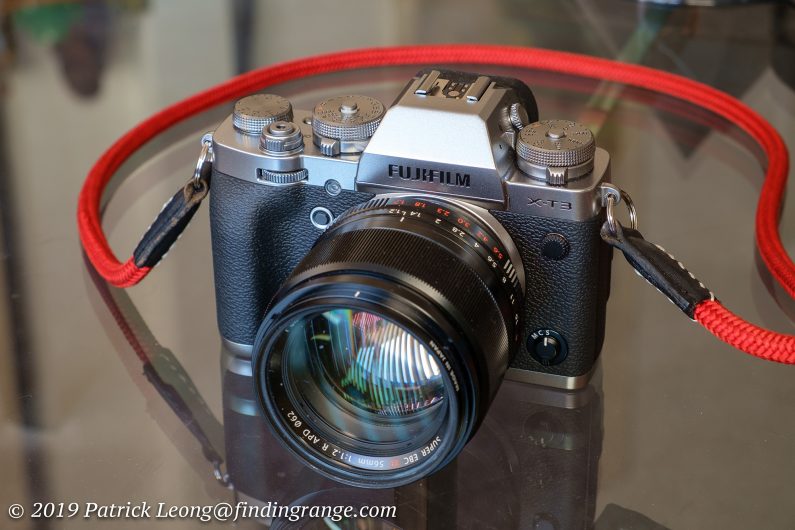
↑ The Fujifilm X-T3 with the XF 56mm f1.2 R APD lens attached.
In terms of ergonomics, if you compare the Fuji X-T3 to its predecessors like the X-T2 or even the X-T1, nothing looks like it has really changed much, which in my opinion, is great. I feel like Fuji really got it right the first time with the X-T1, and making any drastic ergonomic changes would just ruin the X-T3. The ergonomics are pretty much perfect for an APS-C camera, at least for me. The X-T3 is really comfortable to shoot with; it feel great in the hands, and is easy to grip. The X-T3 is also weather and dust sealed. It can operate in temperatures as low as -10ºC. Weighing in at just 539 g (with an SD card and battery), the X-T3 is also lightweight although I have to admit that for me, I wouldn’t mind a little more heft. I find heavier cameras are a little easier to hold steady for those more crucial shots. Lastly, the X-T3 also comes in black and silver now. The X-T2 did come in black and graphite, which looked like silver but you had to pay more for the graphite because it was a “special edition”. Now, they’re the same price. Overall, the X-T3 is just an easy camera to live with, especially long term, and there’s almost no reason to leave it at home because not only is it compact, has great ergonomics and is light, you’re going to get some killer image quality, which we will talk about later.
Also, if you’re a fan of older analog film cameras of the past, the X-T3 will really be fun for you to shoot with. Like many of the Fuji X Series line of cameras, there are great tactile controls on the X-T3 that aren’t just for show but serve actual, real purposes. For one, the controls make the act of shooting actually more fun! It makes photography to me more hands on, which I really like. The controls fully involve the photographer in the photographic process. In addition, making vital adjustments, such as, changing the shutter speed or ISO are more direct and quick to accomplish. You don’t have to dive into the menu to look for the ISO settings, for example.
On the top plate of the camera, you’ll find an ISO dial along with an EV compensation, and shutter speed dial. They all click securely in place as you rotate them, and rarely accidentally move out of place. The shutter speed and ISO dial are both locking to further prevent accidental changes of settings but there are many times I forget to push the buttons down to lock them, and I haven’t had any issues. The X-T2 had these dials as well but the X-T3 differs a bit because it inherits the X-H1’s larger top-panel dials, and rear-panel buttons. The clicking touch of front and rear command dials of the X-H1 can also be found in the X-T3. On one side of the camera, there’s a 3.5mm microphone jack, 3.5 mm headphone jack, charging capable USB-C connector, and a Micro HDMI Type D connector. Lastly, the X-T3 has dual slots for SD memory cards like its predecessor.
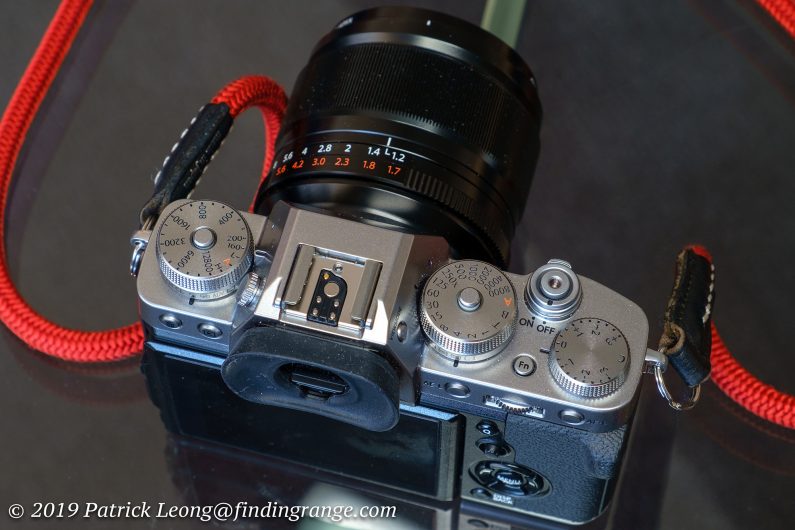
↑There are fantastic real, functional tactile controls all over the X-T3.
As for the viewfinder, there’s still an EVF but in the case of the Fuji X-T3 (Amazon/B&H Photo), it’s a 3.69-million-dot high resolution EVF versus the X-T2’s 2.36-million dot one. The X-T3’s electronic viewfinder also has a high magnification ratio of 0.75x. That’s down a bit from the X-T2’s magnification ratio of 0.77x but I can’t see any difference. It’s also worth pointing out that the display time lag is just 0.005 seconds, and in Normal mode, the refresh rate is 60 fps, while in Boost Mode, it is about 100 fps.
So, now that we got some of the specs out of the way, how is the electronic viewfinder in actual daily use? Well, I definitely have no complaints. The colors are great, it’s bright, it offers smooth viewing, and it’s easy to look through. For those who are analog diehards, I’m sorry to say this but at this point in the camera world, I haven’t missed an optical viewfinder in a long time. I have come to rely on an EVF so much over the past couple of years. It’s not only great to compose with, it’s what I use mainly to review images I’ve taken while I’m on location. It’s much easier to use than an LCD display on bright days. The X-T3’s EVF is currently one of my favorites, and is an absolute joy to use.
It’s worth mentioning that there are also a couple of cool features that relate with the EVF. These are features that I don’t really use for my type of shooting but I’m sure they will be useful for others. For one, if you’re okay with a 1.25x crop (approximately down to 16.6 MP), you can obtain blackout-free continuous shooting of up to 30 fps.
There’s also a Sports Finder Mode, which makes it easier for you to capture moving subjects. The mode marks a cropped area in the viewfinder, and shoots at the 1.25x crop. This allows you to view subjects outside of the shooting frame, so you have a easier time capturing moving subjects.
While using the electronic shutter, the Fuji X-T3 (Amazon/B&H Photo) also features the Pre-Shoot function. With this function, the camera basically starts shooting when the shutter button is half-pressed, and records it at the moment when the shutter button is fully pressed. This is to help you to not miss a decisive moment as they say.
As for the 3.0 inch 1.04 millions dots LCD display, it is now a touch screen. You can select, focus an area, and take a picture using the touch screen. In playback, you can swipe and pinch. There is some customization too. You can even turn the touch option completely off, which is how I have my camera set.

↑ The X-T3 has a flip screen.
The LCD display still tilts up and down, and there’s that cool tilting function while you shoot in the vertical mode but the screen still does not flip around for selfies. I’m okay with this, since I don’t use this feature in other cameras that have this but I just wanted to mention it for those who are looking for this feature.
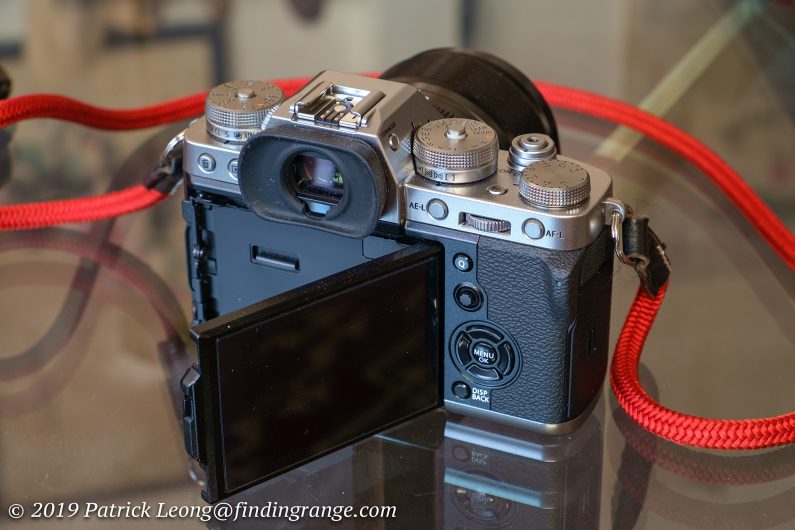
↑ It can also flip in the vertical mode but no selfie style, which is fine by me ;).
So, the Fuji X-T3 is great overall in terms of ergonomics and build. I really don’t have many complaints but of course, if we dig a little harder, we can always find a few issues in anything :). At this point, I feel like a larger battery would be nice for the X-T3. According to the Fuji specs, the X-T3 can shoot approximately 390 images in Normal Mode when the XF 35mm f1.4 R lens is set. That’s not bad but as the specs say, that’s an approximation. In real use, there are days when you’re going to use the LCD display more or you’re shooting out in the cold. Whatever it is, it just wouldn’t hurt to have a little more juice in my opinion. During shoots, I often times will have to swap batteries several times. There are times when I’m shooting in burst mode or the models want to see the frames on the LCD display to get an idea of how they look. I might be out taking street portraits in the bitter cold. The other X-T cameras were great and extremely capable but the X-T3 is even more capable. It just makes sense to me to have a larger battery with a camera this versatile.
The battery life isn’t the end of the world, so I hope I’m not giving the impression that it’s absolutely awful. I just think this should be addressed in the next iteration of the X-T line to really perfect it. It’s definitely on my wish list.
Another issue that may bother some is the lack of in-camera image stabilization. It hasn’t been an issue for what I use the camera for but for some, this may be a very important feature.
I would imagine though that both the battery issue, and the image stabilization would be difficult to solve in the next model because they might have to change up the body. I honestly wouldn’t want Fujifilm to change the X-T body drastically just to accommodate these things.
Lastly, while I don’t shoot any video, it’s definitely worth mentioning that the video capabilities have been seriously upgraded in the Fuji X-T3. According to Fujifilm, the X-T3 is the world’s first digital mirrorless camera capable of recording 4K/60P at 4:2:0 sub-sampling with 10bits internal SD card recording in an SD card in the camera body. It’s also the first mirrorless digital camera with APS-C or larger sensor capable of HDMI output of 4K/60fps video at 4:2:2 sub-sampling with 10 bits.
Fujifilm X-T3 Autofocus:
Now, let’s talk about the autofocus. Every new successor of a camera usually has improvements in several key areas, such as, image quality and autofocus. Sometimes, these improvements don’t seem like much but in the case of the new Fuji X-T3, there is a definite improvement of the autofocus versus the X-T2’s.
Spec wise, Fujifilm has increased the phase detection AF area to the X-T3’s entire frame, and there are 425 AF points to select. The low light AF sensitivity has also been extended from -1EV to -3EV. The X-T3 uses the X-Processor 4, and with this comes an improved phase detection algorithm that lets the camera refocus and meter about 1.5 times more often than other current models. This improves the autofocus for when you’re shooting fast and erratic movements, such as subjects like sports photography. Lastly, you no longer need the vertical grip to shoot 11 fps with the mechanical shutter. I’m not a huge fan of reading, and reiterating specs that you can find on a manufacturer’s website but this is a review, so I know I should be adding some :). Now that we got them out of the way however, let’s talk about how the autofocus really is in actual use.
The autofocus has definitely been improved upon when compared to its predecessor. It’s not even that the autofocus is fast, which it is by the way. What’s great is it just locks and tracks with such a tenacity I just haven’t seen before from another Fuji camera. I thought the X-T2’s autofocus was great. It was fast for what I shot, and it was very accurate. But it’s kind of like one of those situations where you think you’re content with something until you try something else, and realize just how much better it is.
As for the face detection AF, Fujifilm claims the performance has been doubled, and I have absolutely no reason to think this is just marketing hype. I’ve been using it a lot with my portrait shoots, and I find it to be superb. Absolutely superb. The face detection AF locks on so well and so quick. I used the face detection AF in the X-T2 quite a lot, and I felt it did a decent job but the X-T3’s is just on a whole new level. It’s definitely something I use in all my shoots now.
It’s also worth mentioning that the autofocus is better with the older generation lenses. I reviewed most of the X Series lenses on this site but most are review samples. I only own four lenses, and they happen to be older generation lenses: the XF 18-55mm, the XF 35mm f1.4, and the XF 56mm f1.2 APD. I also own a Zeiss Touit 12mm f2.8. The XF 35mm f1.4 and the XF 56mm f1.2 APD have always been slower autofocus lenses. The XF 35mm f1.4 has been vastly improved thanks to firmware updates but it still doesn’t measure up to the XF 35mm f2 in terms of autofocus speed. Both these lenses have a quickness and confidence on the X-T3 that I have not experienced before.
I haven’t used the XF 35mm f2 version in a long time but I can tell you that I really don’t miss it’s speed now; The XF 35mm f1.4 R lens still isn’t as quick but it feels quicker on the X-T3 than ever. I’ve been using it a great deal for portrait shoots ever since I bought the X-T3, and I absolutely love shooting with this combo.
The XF 56mm f1.2 R APD lens also feels quicker. I was in this one shoot where it was indoors and in a hallway. The lighting was difficult because there was a lot going on; some areas were brighter than others but overall, since it was indoors, the lighting just sucked. The only artificial light source that I had was an LED light panel, which didn’t put out that much power. I was amazed at how quickly the XF 56mm f1.2 APD was locking on and focusing. I was shooting quite a few frames in a short amount of time; the model and I just got into this rhythm, and we were just shooting frame after frame with no breaks. This combo kept up with NO problems. I had face detection AF on, and I was shooting at f1.2. All my images were tack sharp in the eyes.
I picked the XF 35mm f1.4 and the XF 56mm f1.2 APD because those are my favorites ones of these focal lengths. With the 35mm, I knew I wanted the extra stop over the f2 version. The faster autofocus and weather sealing of the f2 version weren’t crazy important to me. I’d rather have that extra stop for shallow depth of field shots and night shooting. As for the 56mm, I chose the APD because, well, I knew I was going to use that lens mainly for its great shallow depth of field qualities, so it made sense to me that I would want the improvements the APD version offered even if those improvements weren’t major. In other words, I was going to blur things out with that lens, and I might as well maximize that quality. That’s how I looked at it. Autofocus wasn’t a major factor in my decision because it was a specialty lens for me. Even though I’ve been happy using these two lenses for all these years, there were days when I wish I had the faster versions of these lenses but now, I’m glad I never changed them because they work so great on the X-T3.
Fujifilm X-T3 Image Quality:
In terms of image quality, the Fuji X-T3 (Amazon/B&H Photo) now uses the new 26 megapixel X-Trans 4 sensor, which I’m sure we will see in other future models as well (the new Fuji X-T30 that’s coming out will have it). It’s a back-illuminated sensor for improved light receiving performance, which is a first for the Fuji X Series. 160 ISO is now part of the normal ISO range versus being an extended ISO in previous cameras.
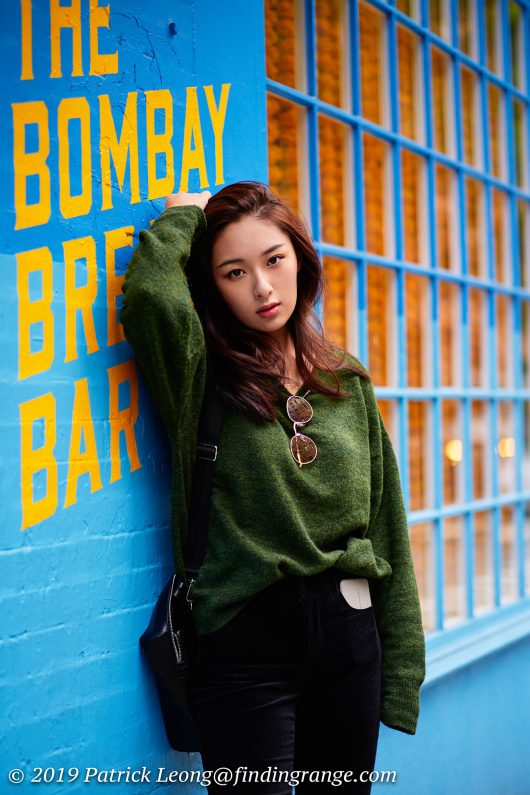
↑This was one of the first photos I took with the X-T3. This was taken with the XF 56mm f1.2 APD at f1.2. The ISO was set at 160.

↑ One of the first trips I took with the X-T3 was to Mystic Seaport in Connecticut. This was taken with the Zeiss Touit 12mm f2.8. 160 ISO with the lens set at f8.
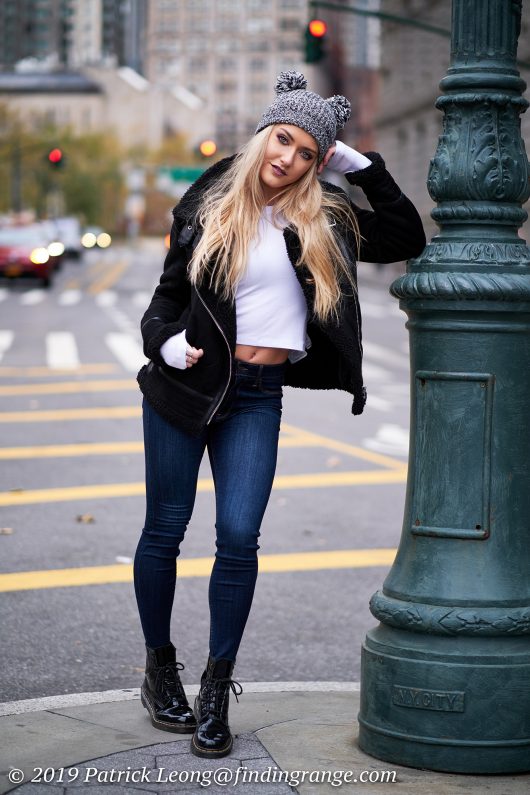
↑ Here’s a shot of one of my favorite people to photograph. If you’re ever on my Instagram, you’ve probably seen many photos of her already. This was taken with the XF 56mm f1.2 APD at f1.2. I used 250 ISO.

↑ This was a black and white conversion I did in Capture One 12. This was taken with the Zeiss Touit 12mm f2.8 at f8. 160 ISO.
Overall, the Fuji X-T3 (Amazon/B&H Photo) produces stellar images. Thanks to the lack of a low-pass filter, and those great X Series lenses, images produced have plenty of detail in them. Dynamic range is also great; I definitely feel it’s better than what I was getting from my X-T2, that’s for sure. One of the first characteristics that I noticed was how well the X-T3 RAW files held up after editing, especially ones that were more contrasty meaning if they had bright skies and darker landscapes, for example. When I’m shooting scenes like this, I notice the files hold up a lot better after I run them through a RAW processor than ones from my X-T2. There’s more detail retained in the shadows. Highlights are more easily recovered. Contrast and color rendering are especially good as well, and to me, better than what I see from any previous X Series camera. I don’t know if it’s just my eyes or wishful thinking but I really do feel Fuji got the color just right with the new sensor. You still get those vibrant, beautiful colors that we’re accustomed to from Fujifilm but at the same time, they’re not overly exaggerated. They don’t make the images look fake or overdone in my opinion.
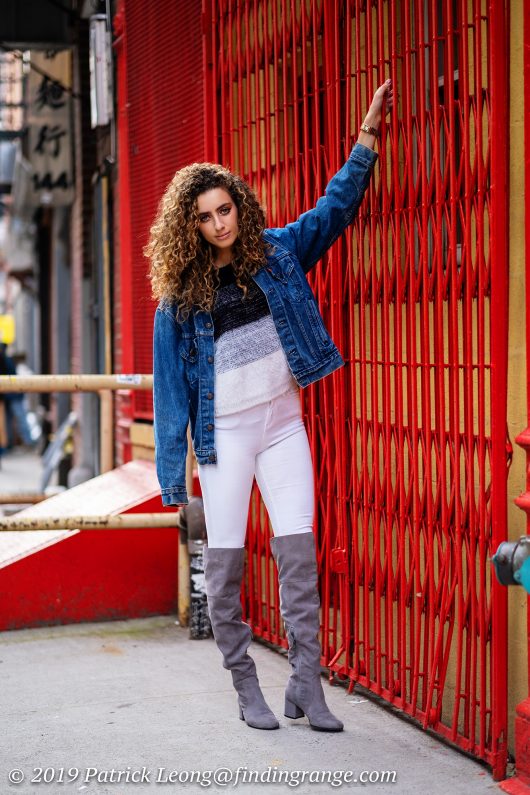
↑ I am a fan of the color red, and thought this background would pop. This was taken with the XF 56mm f1.2 APD at f1.2. 160 ISO.

↑ Here’s a shot taken through a window with the XF 18-55mm f2.8-4. The settings were f4 for the lens, and 3200 ISO.

↑ This was taken with the XF 56mm f1.2 APD at f1.2. I definitely shot wide open quite a bit for this review lol. Black and white conversion was done in Photoshop CC Camera Raw. This was taken at 1000 ISO.
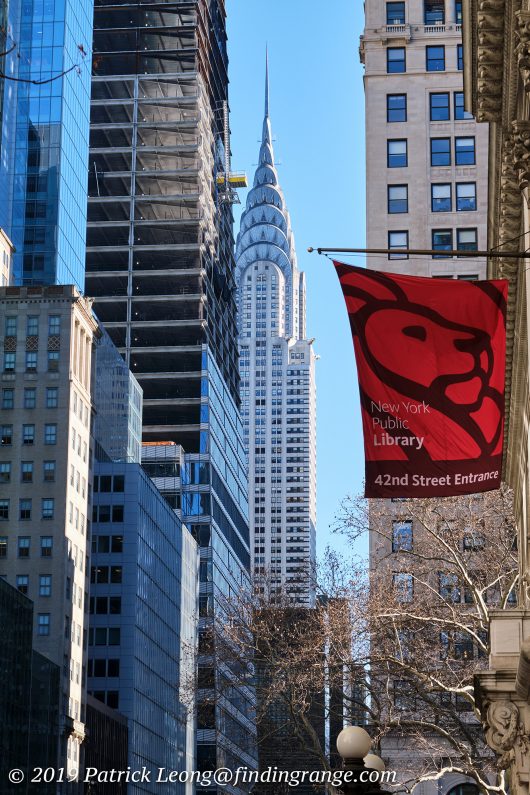
↑ Here’s another shot taken with the XF 56mm f1.2 APD. The settings were f8 at 400 ISO.
After all these years, it seems the Fuji colors/sensors have kind of matured if that makes sense. For me, having more megapixels can be a bonus but I’d much rather have a manufacturer just improve on their sensors like this as oppose to worrying about adding more megapixels. 24-26 is plenty for me; I just want them to make the overall rendering better, which is what they did. By the way, all the photos here were processed from RAW files with Capture One 12 and Photoshop CC. Also, a lot of the portraits here (like the one below, for example) were meant to be cropped in the 5:4 ratio but I chose to keep the original crop, since this is a review.
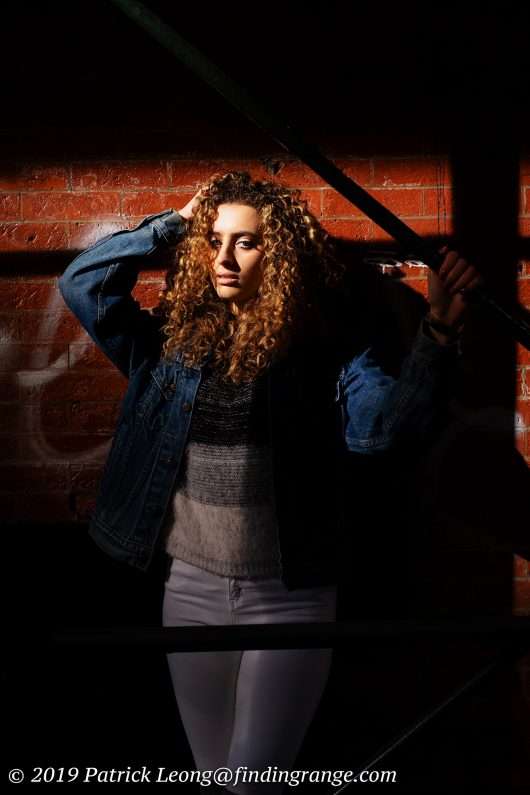
↑ I thought I’d have some fun with shadows in this photo. This was taken with one of my favorite lenses, the XF 35mm f1.4. The settings were f2.5 at 160 ISO.

↑ Here’s one taken with the XF 18-55mm. The settings were f8 at 160 ISO.

↑ This was taken with the XF 35mm f1.4. The settings were f1.4 at 160 ISO.
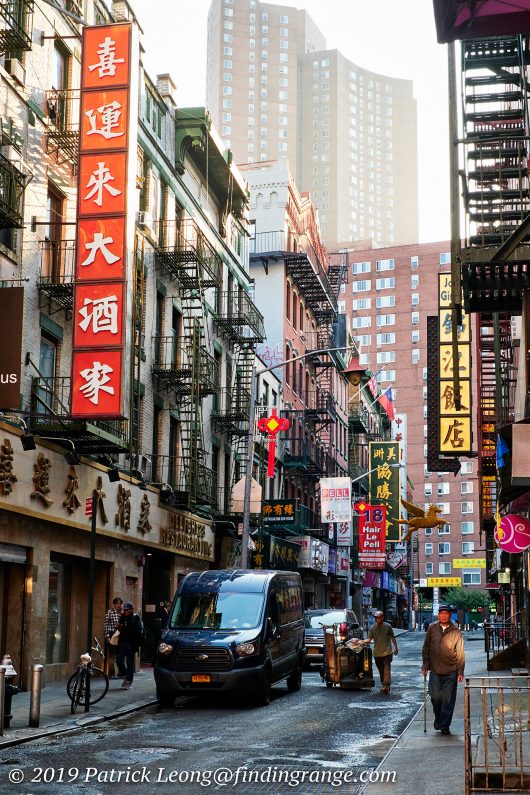
↑ This was taken early in the morning with the XF 35mm f1.4. The settings were f9 at 2000 ISO.
While I was mostly talking about RAW files just now, if you’re not interested in post-processing any photos, the Fuji X-T3 produces superb out of camera jpegs that often times require little to no editing. The X-T3 still uses the film simulation modes that are found in other X Series cameras. They all work great but I must admit that I like the Provia Mode best, which is actually the default setting.
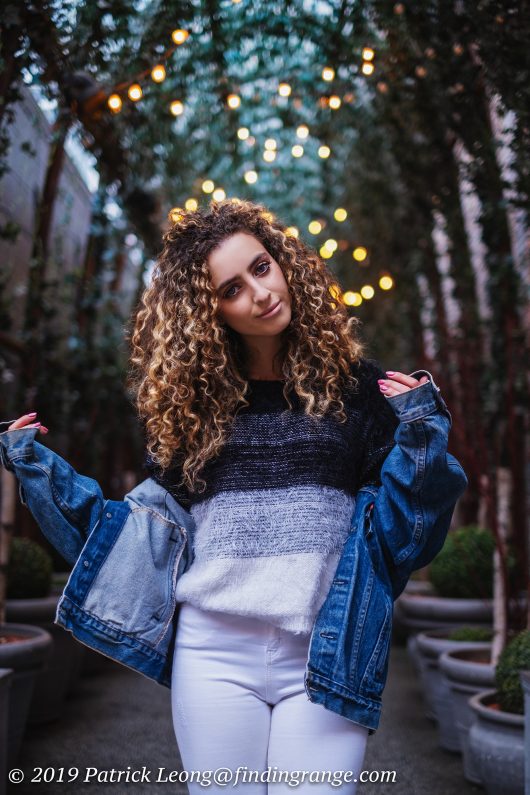
↑ Here’s one taken with the XF 35mm f1.4. The settings were f1.4 at 250 ISO.

↑This was taken with the XF 35mm f1.4. The settings were f8 at 3200 ISO.
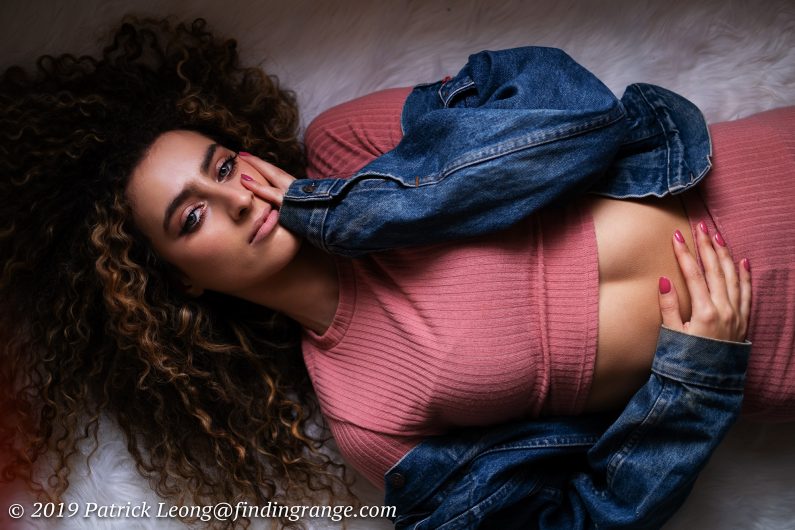
↑ Here’s another taken with the XF 35mm f1.4 in natural light. The settings were f1.4 at 160 ISO.
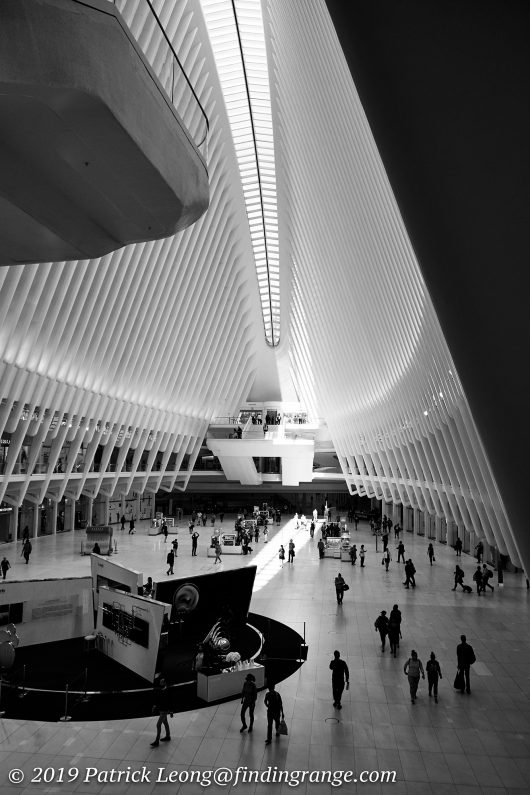
↑ This was taken with the XF 18-55mm. The settings were f5.6 at 800 ISO. Black and white conversion was done in Capture One 12.
As for high ISO capabilities, I’ve crank the Fuji X-T3 up pretty high, and I’ve been very happy with the results. I feel the X-T3 files are slightly noisier than files from my X-T2; I thought it was my imagination at first but apparently, there are other reviewers that feel the same. Still, it’s not something really noticeable, and what you gain in terms of trade off when it comes to color and contrast overall, and just a more flexible file in general, which I spoke about earlier, is well worth it. At 1600 ISO there is some noise creeping in but nothing that’s out of the ordinary. At 3200 ISO, you’ll notice more noise but detail is still very high. Color rendering is still great in my opinion. 6400 ISO is where you’ll definitely see more noise but I’ve used this setting often, and I felt I’ve achieve great results.

↑ This was taken with the XF 18-55mm. Settings were f5.6 at 1600 ISO.

↑ Here’s a 100% crop of the photo above.

↑ This was taken with the XF 35mm f1.4. The settings were f8 at 3200 ISO.

↑ This is a 100% crop of the photo above.
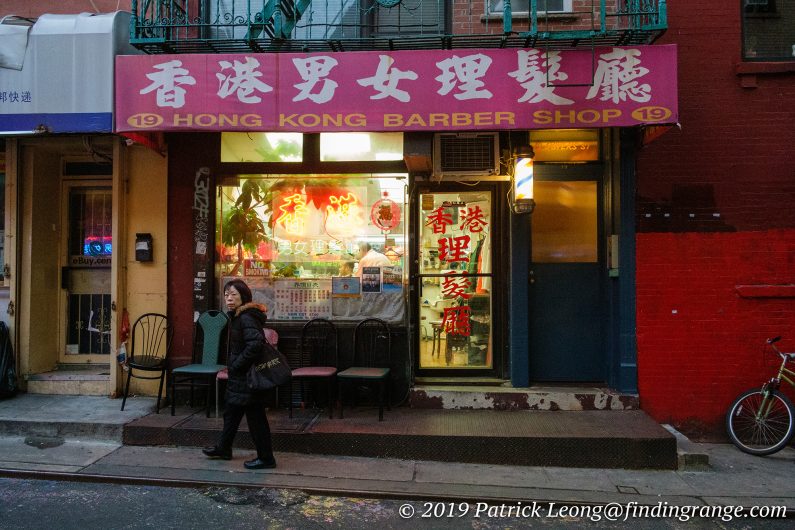
↑ Here’s one taken with the XF 18-55mm. The settings were f5 at 12,800 ISO.
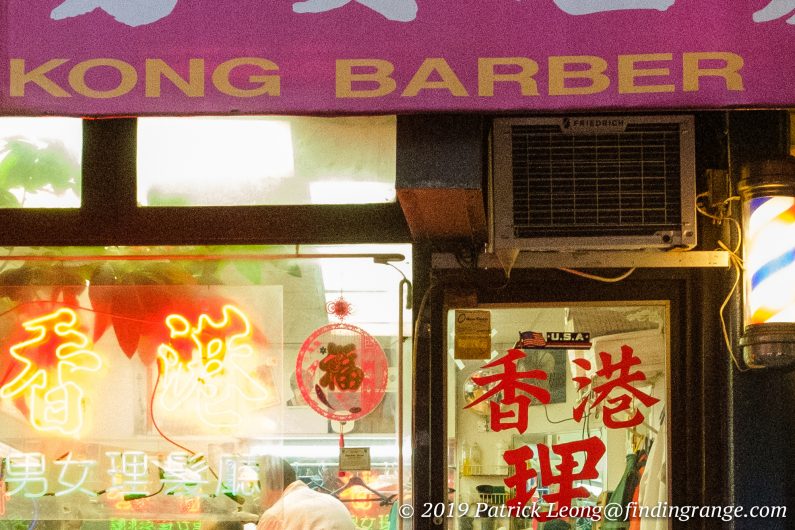
↑This is a 100% crop of the photo above.
Overall, I am completely comfortable shooting up to 6400 ISO with the Fuji X-T3 (Amazon/B&H Photo). I feel contrast, and especially color are well retained up to 6400 ISO. 12,800 ISO is where things get noticeably more noisy, and where there are more color issues. Still, it’s usable depending on your subject matter, and how you expose your images. The other two settings are 25,600 and 51,200 ISO, which I save more for emergencies.

↑This is another example taken with the XF 18-55mm at 12,800 ISO. The lens setting was f6.4.
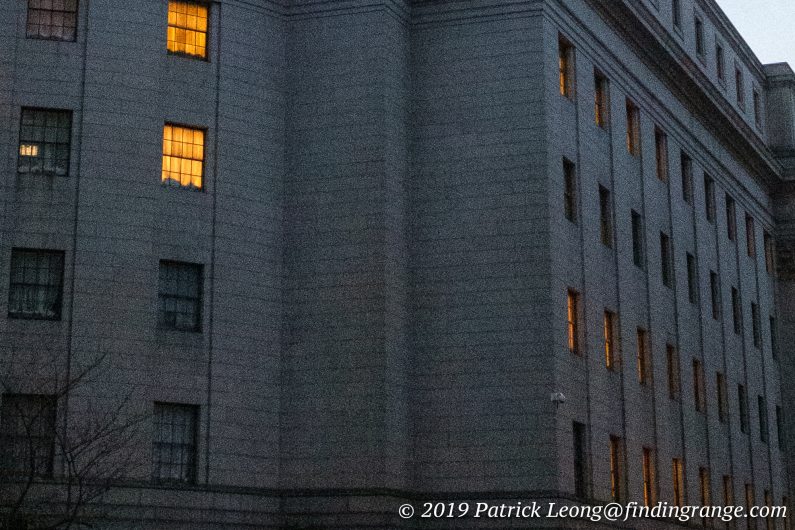
↑This is a 100% crop of the photo above.
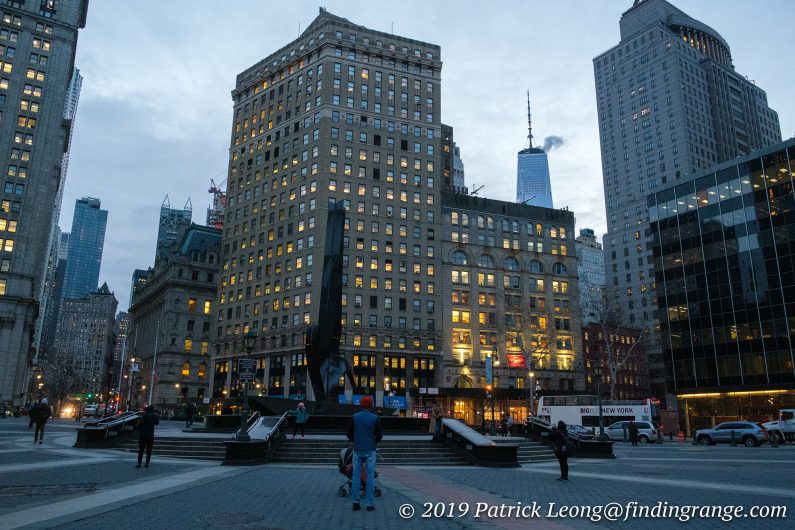
↑ Here’s one more taken at 12,800 ISO. Lens is the same as above and aperture chosen was f6.4.
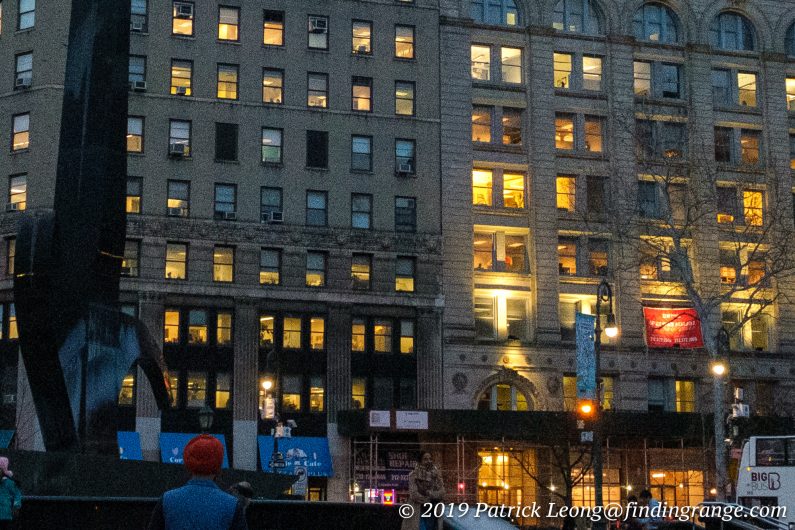
↑ This is a 100% crop of the photo above.

↑ This was taken at 25,600 ISO with the same lens as above at f5.6.
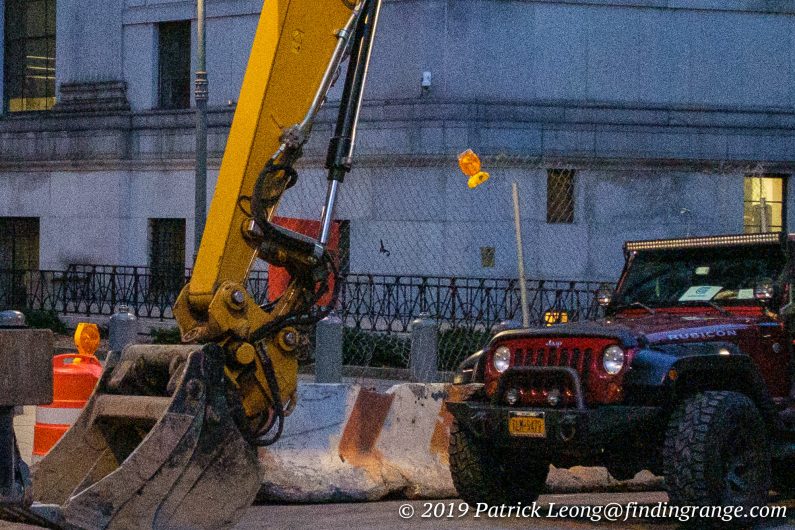
↑ Here’s a 100% crop of the photo above.

↑ This was taken at 51,200 ISO with the XF 18-55mm. Lens setting was f5.6.

↑ This is a 100% crop of the photo above.
Fujifilm X-T3 Pros And Cons:
Fujifilm X-T3 Pros:
- Well-made and built to handle pro use.
- Compact and great ergonomics.
- Weather sealed.
- Great EVF.
- Impressive electronics.
- Fast autofocus.
- Super image quality.
- Great out of camera jpegs that require little to no editing.
- Excellent high ISO capabilities.
- Great selection of lenses.
- Best X Series camera so far.
Fujifilm X-T3 Cons:
- Would like a larger battery.
- No in-body image stabilization.
Fujifilm X-T3 Verdict:
As far as I’m concerned, there really isn’t a seriously wrong step that Fujifilm made when designing the X-T3. This is plain out their best X Series camera so far. It still has the familiar size, great tactile controls, and body style of past X-T cameras but with vastly improved electronics, autofocus capabilities, video capabilities, and image quality. Plus, the X-T3 has a much more complete lens line up than ever before to back it up.
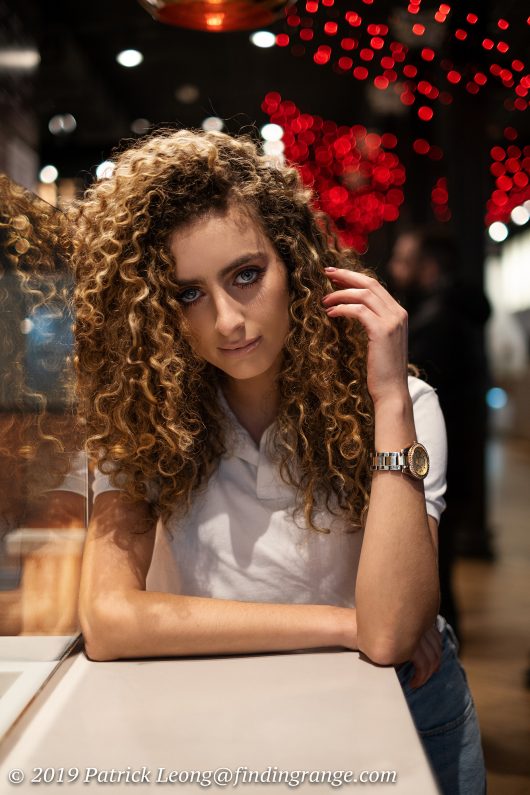
↑ A bokeh shot taken with the XF 35mm f1.4 at f1.4. 400 ISO.
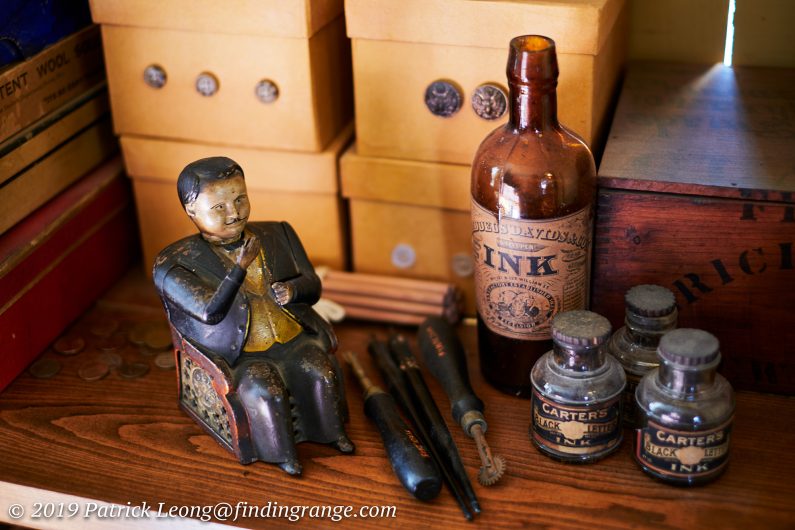
↑ Here’s another taken with the same lens as above at f1.4. 160 ISO.
If you’re currently shooting with an X-T2, and wonder if you should upgrade, all I can say is each of us has different needs. The X-T2 was a fantastic camera when it was first released, and it’s still a fantastic camera now. An upgrade is not necessary in my eyes, especially if you’re happy with your X-T2. By all means, continue to enjoy it and take wonderful pictures. Maybe a lens purchase might be a better idea, who knows. With all that said, I really like the new X-T3, and I don’t regret at all upgrading to it. The improvements have really made the X-T line near perfect now in my opinion. The best part is this is only the beginning. Fujifilm has been known for constantly improving their cameras, sometimes significantly, through firmware updates.
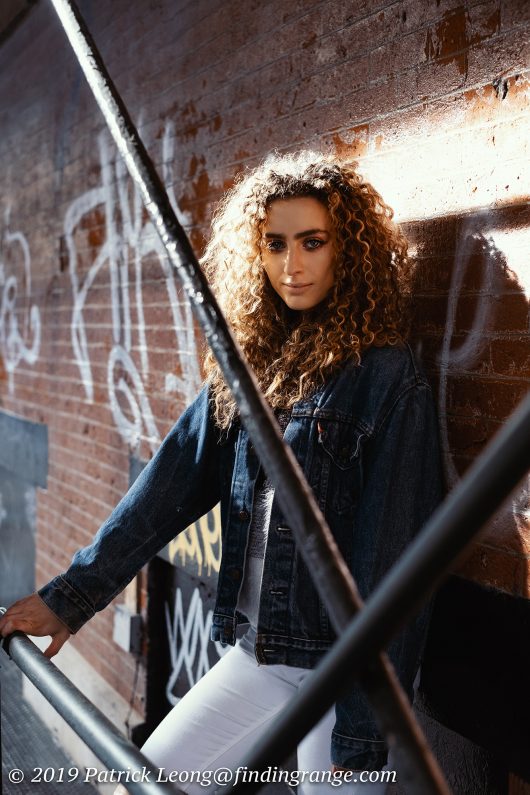
↑ This was taken with the same lens as above. The settings were f2.5 at 800 ISO.
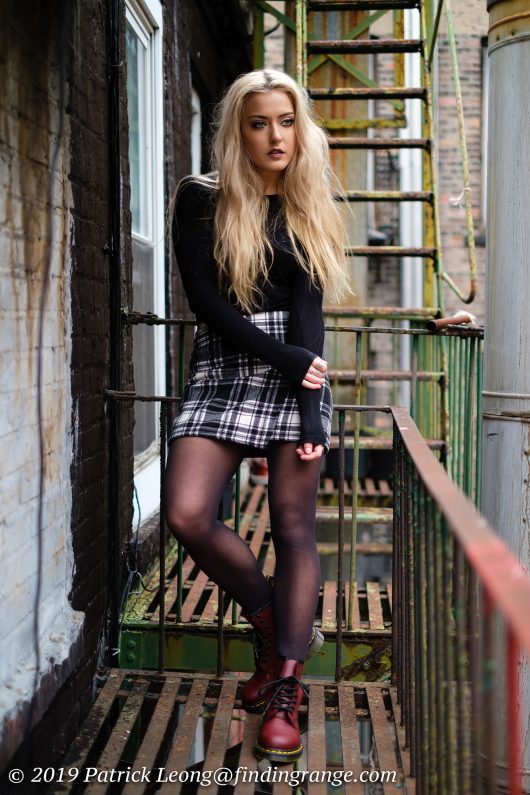
↑ Here’s one more taken with the XF 35mm f1.4. Have I mentioned how much I love this lens :)? The settings were f1.4 at 160 ISO.
At $1,399 ($100 rebate now), The Fuji X-T3 isn’t outrageously priced but it is priced high enough where there are plenty of other cameras to consider. For one, you are inching closer to full frame territory, which definitely has its own benefits over a cropped sensor. Two examples that come to mind are the Sony A7 iii which is $1,998, and the Nikon D750 which sells for $1,296.95 after a huge rebate.

↑ Here’s one taken with the XF 56mm f1.2 APD. I remembering we only had about an hour to shoot this day. The settings were f1.2 at 160 ISO.
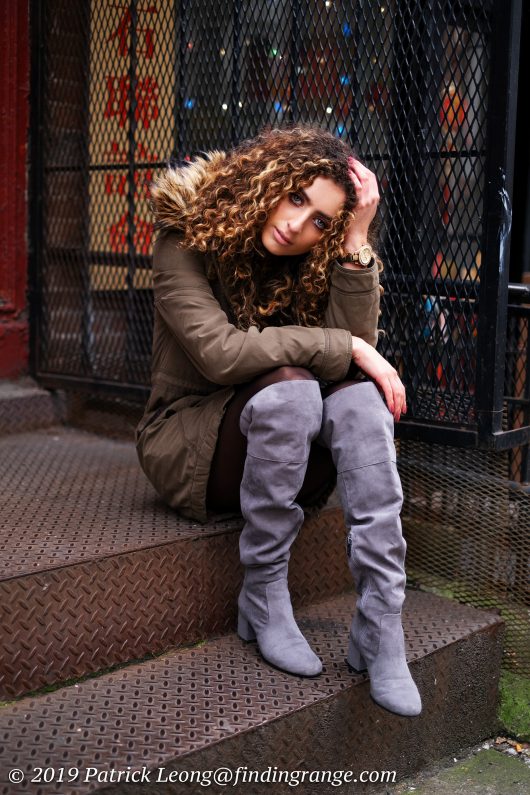
↑ Here’s one taken with the XF 35mm f1.4 at f1.4. 160 ISO.
But when you’re buying a camera, it isn’t always just about image quality, especially since most cameras these days offer excellent IQ. The X-T3, of course, still produces superb images, and the images are unique to itself (Fuji has its own look, and rendering like every other camera maker) but there’s more too a camera like usability, for example. The X-T3 is just such a nice size, and it handles so well. It has such a great combination of many key features, and in that way, it’s extremely versatile. There’s really not anything it can’t do or shoot I should say. It’s a camera that makes such a great travel companion; you’re never going to want to leave it at home, and in that way, it can be your best camera. Plus, those tactile controls are awesome because they actually get you fully involved in the photographic process, which sometimes feels like its missing from some cameras these days. Those controls are actually one of the main reasons why I love using the X Series system so much.
So, if you’re looking for a new camera, I highly, highly suggest taking a closer look at the new Fuji X-T3. It seriously is Fujifilm’s best yet. I’ve owned it since its release, and have loved it in every way since.
Thanks for taking the time to read my review! If you’re considering purchasing the X-T3, and my review helped you decide, please help support this site by purchasing from any of the links in this review. It will not cost you anything extra. Thank you for your support!


Hello Patrick,
Like many I imagine, I’ve been looking forward to this review, & I’m really pleased with what you’ve done to create a comprehensive look at all things important to real everyday photographers. Lots of varied photos to show the camera in actual use & good discussion of its capabilities to give new life to older lenses. I think the folks who have concern about the new sensor’s use in low light, high ISO conditions will appreciate your detailed coverage of this issue. All in all, another great review!
Jed
Hi Jed,
Great to hear from you! Apologies for it taking so long! I am finally catching up with things. I appreciate you taking the time to read it, and I’m glad you enjoyed it! I hope you’re doing well!
Best,
Patrick
Everything and much more covered in your review plus great pix showing what the camera can produce.
Thanks inthedarkroom!
Appreciate you stopping by!
Best,
Patrick
Hi Patrick:
Thank you for this excellent, comprehensive review!!
How does the XF 56 f/1.2 balance on the X-T3? Is it front heavy and would you suggest the vertical grip when using this lens for portraits?
Thank you.
Best,
Hank
Thanks Hank!
Much appreciate you stopping by, as always, and reading my review! The lens will be a little front heavy but overall, I don’t find it that bad. It’s definitely not something like the XF 90mm, which I love but is noticeably more front heavy than the XF 56mm. Of course, the vertical grip will always help but I don’t feel it’s essential for the XF 56mm.
It’s still comfortable for me to hold the X-T3 with the XF 56mm in the portrait position, and as you can see, no camera shake or anything either. I use this combo quite a bit too; I’ll shoot in studio with it but I also often go on street portrait shoots carrying just this combo, and nothing else. It works great and I highly recommend it.
Let me know if you have any other questions!
Best,
Patrick
Thanks so much for your insightful thoughts on the XF 56/1.2 and X-T3 combo.
Have a great day!!
Hank
Thanks, Hank! I hope it helps! Let me know if you have any other questions. Have a great day as well!
Best,
Patrick
I do headshots – have been wanting to choose a secondary camera to do more shooting outside of the studio in natural light. I think I’m choosing between what you are looking at… namely, the SL with 50 lux-SL (I currently have the M10 and 50 lux-M, but have been lusting after the SL/50-SL combo for awhile). I rented an X-H1 for a recent event that needed silent shutter, and I liked it – was thinking of the 35 1.4 with the 56 1.2 combo.
Which do you prefer? The SL pairing or the X-T3 combo? Is there a noticeable enough difference to you? And lastly, do you feel that the 50 lux-SL is too sharp for close-up portraits? I ask because I have to give galleries of images to people and don’t have time to smooth out everything before doing retouching on a handful of images they select.
Thanks!
Dan
Hi Dan,
For the past year, I’ve done around two to three shoots per week with the SL, and so I HIGHLY recommend it, especially with the 50mm Lux-SL. This pairing is out of this world good. I’ve been shooting with the 50mm, since it’s been released here in the US, and it’s extraordinary. Leica has called this 50mm their reference, and after using it quite a bit, I completely agree. It’s the best 50mm I’ve ever used by far. I also own the 90mm Cron-SL, and the 24-90mm but the 50mm is my most used lens.
Sharpness might be an issue for you though because this is the kind of lens that’ll capture dust on eyelashes at f1.4. It captures every single pore. I’ve had models that quite frankly were outright both frightened, and amazed by the detail lol. I do do a lot more editing work with the SL photos than I do with the X-T3 files because of the detail. But I still highly recommend this pairing. I can not praise it enough! The files just come out really nice…class by itself look.
I’ve been a bit lazy with posting lately but I will be posting tons more content about the SL in the very near future, if you’re interested. I have tons of files that I’ve been trying to catch up with. I’ll also be posting a 50mm Summilux-SL review as well after I post a few more reviews that I’ve neglected. I might have a small portrait pic post coming later this week too. You can also check out my Instagram @findingrange, since I’ve been posting a lot from the SL and 50mm combo.
Anyway, if you have any questions, let me know :). Btw, I saw your site, and I love your work!
Best,
Patrick
Thank you for responding, Patrick! I’ll definitely follow you on Instagram. If you have any RAW or SOOC jpegs with the SL/50 Lux-SL combo that are a little more headshotty (doesn’t have to be as tight as a headshot, but maybe a little closer), I’d love to see how it renders close up (feel free to email anything to me at the email listed here). I’ve been to the local Leica store to try the combo, but have definitely noticed the strong sharpness.
Thanks!
Dan
Hi Dan,
Apologies for the late reply! I’ve just been really busy lately, and I haven’t had a chance to get back to my blog. I looked, and suprisingly, I can’t actually find any that are headshotty lol but when I shoot next, I’ll take one. Speak to you soon,
Best,
Patrick
Hi Patrick,
I finally got into the Fuji X-T series. I find the X-T3 to be a great camera. Coming from the X-Pro series I find the bigger viewfinder to be fantastic. Also, I can see through the viewfinder with sunglasses on. It is slightly heavier than the Pro 2 but does not take much getting used to. Anyway, I am exceptionally happy with it.
Cheers,
Steve
Hi Steve,
I’m so glad to hear you purchased the X-T3. It’s one of my favorites. The viewfinder is quite excellent. It’s one of the reasons I chose it over the X-Pro series. I hope you continue to enjoy it, and I very much look forward to seeing your pictures with it! Always appreciate you stopping by,
Best,
Patrick